Every vehicle is equipped with numerous components and systems which are important for its functioning, unfortunately some parts are completely neglected until they need repair or replacement, a prime example of such a critical component is the wheel bearing hub assembly. Be it simply turning the wheels or carrying the weight of your car, it is a very critical component of any vehicle; however, as time passes and a car is used frequently, this part of the car begins to deteriorate, and depending on the extent of the damage, several alarming and concerning issues may arise which not only may affect the functioning of your car but also put your safety at risk. Therefore, spotting these issues at their initial stages is extremely important if you want to avoid any further damage and expensive repairs. This article will talk about the most telling signs of a bad wheel hub so that you can identify if your vehicle may be in danger based on the 10 signs that we will offer. Bearing in mind the unusual sounds, instability, and so on, this post will provide you with the knowledge to intervene before something more severe happens.
What are the most common symptoms of a bad wheel bearing?
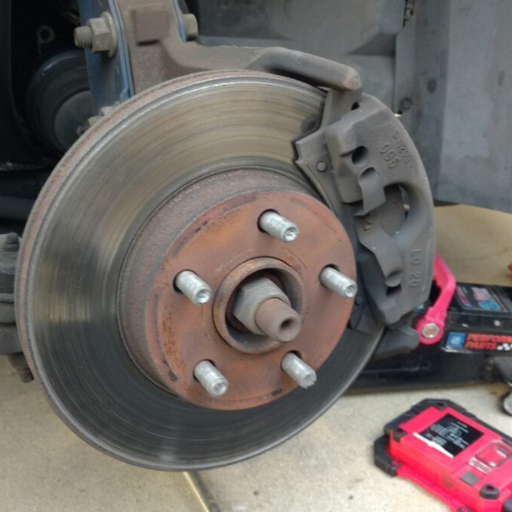
Common Symptoms of a Bad Wheel Bearing
One can suspect a bearing is faulty if one hears sounds like grinding, humming, or rumbling from one or more of the wheels, especially when they are accelerating or turning. Such an occurrence may also be associated with uneven tire wear, a loose or wobbling wheel, or smoother steering than usual. Furthermore, it is possible for the car to pull to either side or steer with less authority than is normal. Ignoring these signs should be avoided to support other components of the vehicle and to protect your safety on the streets.
Unusual noises: Grinding, humming, and growling sounds
from odd grinding, humming, or growling noises, it has come to my attention that there are some mechanical issues, and these issues shouldn’t be overlooked. These noises usually indicate certain faults in wheel bearings, the drivetrain, or sometimes even the tires. So if a grinding noise is heard, it is likely that the wheel bearings are loose, and if not attended to, it could lead to dire consequences. Humming sounds, on the other hand, can be indicative of uneven wearing of tires or the tire’s alignment, which should not be overlooked as if unattended, it could lead to expensive reworks. Growling noises shouldn’t be taken lightly as well as they often originate from sizeable wear and tear of some crucial parts. While it is true that any persistent grinding or rumbling noise ought to be worrying, I have gotten into the habit of quickly performing a visual examination to find the problem that requires a solution. The best part is that you will do yourself a favor by paying close attention to these noises, as you must have heard ‘prevention is better than cure’, and an early fix on these avoids spending and ruining your driving in the later stages.
Steering wheel vibrations: When do they indicate a failing wheel bearing?
As a rule of thumb, steering wheel vibrations are often linked to a problem with a bad wheel bearing. Nonetheless, it is crucial to take into consideration the specific parameters in order to accurately interpret the problem. From my experience, here’s what to look out for:
- Frequency of Vibration -An unexpected increase in vibrations with the turn of the wheel is often consistent with a failing wheel bearing. Further, some rates of acceleration with the steering wheel can shake the driver and thus a clear-cut bearing damage can be aggravated, particularly when the road is in excellent condition.
- Noise Patterns -Turning the wheel might emit various sound patterns, for instance, a constantly heard pattern of humming, grinding, or growling noise, which rotates with the wheel movement is a good sign of an attendant bearing damage. Hence, when a thin wiggle is felt, it overextends the lives of these bearings.
- Correlated Steering Response – A wheel that bears down tight will concentrate, raising the front to the left or the right to control balance. All in all, with gentle steering wheel pressure, one is able to master the wheel effectively, carrying out exercises above and beyond heavier exercises with the steering response getting a slight change.
- Wheel Play -When searching for vibration, my first step is to check for undue play or looseness in the wheel; after all, loose components will vibrate. Altering the elevation of components and utilizing wheel joints can also assist in confirming previous attempted shifting joints.
- Heat or Uneven Wear – A loose fitting bearing can, in practice, create a breach in the circular column and so send a tire or wheel moving at high velocity along the axial line of the supporting wheel or axle joints. Checking the temperature of the wheel hub as well as the tire surface after completing a task can serve to verify where the problem is manifesting itself.
These factors, when combined, look better when assessing whether a wheel bearing is on its last legs. Addressing the issue beforehand especially avoids other replacements as those are more expensive, such as the axle or suspension, and helps the driver be safe.
Uneven tire wear: How it relates to worn wheel hub assemblies
I have come to understand that uneven tire wear is a clear indicator of a failing part, which, in this case, might be the wheel hub assembly. When the wheel hub is damaged, it may lead to instability, incorrect alignment, excessive friction, and blemishes, all of which lead to one result: uneven tire wear. Such a pattern of wear and tear that would lead to the end of you’re car’s axle brace would not only shorten the duration of tires on the vehicle but would also quite drastically affect the steering of that particular car and, even worse, the safety of it. It’s very important to fix a damaged wheel hub assembly in a timely manner, this offers better alignment of everything, saves the tires, and makes sure no further damage is being incurred which later is going to result in a more expensive cost for repairs.
How does a bad wheel bearing affect your vehicle’s performance?
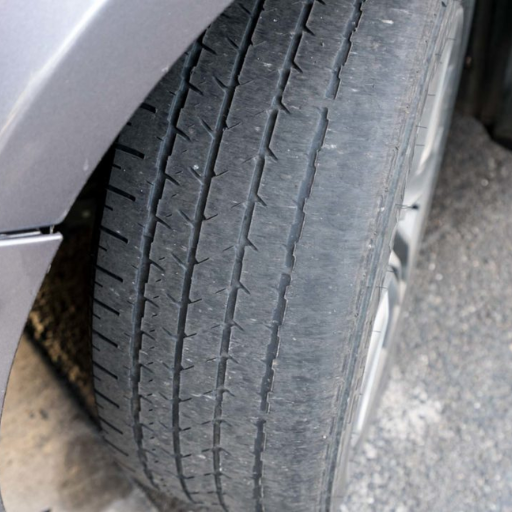
A defective wheel bearing may cause unstable rotation of the wheels, increased friction, and overheating, seriously affecting the functionality of the car. This could result in a car that’s difficult to steer, unevenly worn tires, too much shaking, or even decreasing the efficiency of the braking system. As soon as possible, take care of the problem for the sake of safety and to avoid further additional mechanical damage.
Loose steering wheel: What it means for your wheel hub
A steering wheel that is ‘too light’ usually indicates the possibility of a fault within the wheel hub assembly. As per my experience, in most cases, this has to do with the condition of the wheel hub or, sometimes, its bearings components as they secure the wheel in place. In a way, such looseness compromises steering accuracy and, with it, is related to driving safety as the tasks become not only more complex but also hazardous. This is important because the wheel hub controls the relative position of the wheel in relation to the vehicle, so any movement in the steering wheel should be corrected as soon as possible to reduce the risk of other damages or accidents in the future.
Play in the wheel: Signs of a worn bearing
Diagnosing a Worn Bearing
Specific warning signs can highly be a method for identifying a worn bearing. Some of the common indicators include humming or grinding noise caused by the wheel area, vibration on the steering wheel, or uneven wear of tires. Moreover, the noticeable play or looseness when the wheel gets rocked back and forth while raised high is a great indicator of the compromised bearing. These indicators should be addressed as soon as possible in a bid to avoid further damage and to guarantee the safety of all the passengers in the vehicle.
Impact on the braking system and ABS
a defective wheel bearing can pose major risks when it comes to the brake system and ABS. A worn-out bearing can hinder the wheel’s smooth movement, which affects the ABS systems. Wheel sensors are essential for the smooth operation of the ABS systems as they help monitor the power supplied to the wheels. But if the bearing is torn, shredded, or worn out, this means the signal sent to the ABS will be wrong, causing the system or the efficiency of the brakes to work at less than efficient levels, depending on the wearing out. The safety of a vehicle is convinced, but the distance between the vehicle and the action that needs a response has increased. This is why making sure to deal with a damaged bearing as soon as possible is key so that the brake and ABS system work properly.
What are the dangers of driving with a bad wheel hub assembly?

Operating a vehicle equipped with a faulty wheel hub assembly is quite hazardous, and since I am in the industry of vehicle safety, I will explain the risks involved to you in detail. Here’s what happens:
- Reduced Vehicle Stability
When it comes to damaged wheel components, the wheel hub assembly likely plays a major role in this rather unfortunate situation. The steering becomes loose as the vehicle reaches a higher speed, which can be almost uncontrollable and increase the chances of an accident.
- Accelerated Tire Wear
Tire life is also compromised, but there are uneven wear patterns, which may be slightly more apparent due to the strain. Increased replacement costs and reduced grip and handling are the aftermaths of such interactions with the hub assembly.
- Noisy and Unsafe Driving Experience
Disastrous consequences can occur if a click or a grind caused by the wheels is ignored and can cause wheel failure. All of these annoying sounds are clear warnings and signs of further internal damage and should not be shunned. The click or the hum that you hear from the grip or handles could be detrimental to the vehicle.
- Compromised Anti-lock Braking System (ABS)
Faulty sensors can cause interference; however, in extreme cases, they might also rely on hub assemblies. When the ABs fail, the ability to brake efficiently becomes hard and can be extremely harmful if ever an emergency brake is required.
- Risk of Wheel Detachment
The most extreme hazard is the threat of a wheel coming off the car. In cases where the wheel has been forcibly removed, and the hub assembly is rendered incapable of properly supporting the wheel, there is a chance for the wheel to dismount, leading to dire situations.
Consequently, the dangers are not justifiable when operating a vehicle with a bad wheel hub assembly. In case you see any warning signs resembling those discussed earlier, get your vehicle checked by an experienced mechanic with time. Timely approval of the issue prevents you from getting into various unsafe situations and also helps you economize because the repairs you will have to do later on are going to cost a lot.
Risk of wheel separation while you’re on the road
From my experience in the automotive industry, separating from the wheel while you’re on the road is a situation you’d want to avoid. There are a lot of safety issues around this aspect, which include putting your and your passengers’ lives at risk. Even though the chances of getting some minor injuries are a guarantee, getting injured isn’t a possibility either. It is also important from a mechanical perspective to avoid rusting, as the chances of doing so while loading are slim. That’s why I always encourage changing the oil tank, as it is much cheaper than buying a new car. Keeping an eye out for the minute things would, in fact, help a person add up to their level of confidence while driving.
Compromised vehicle stability and control
In relation to compromised vehicle stability and control, one of the elements that I tend to highlight, which is frequently understated, is the importance of a well-functioning wheel hub assembly. Due to its crucial nature, I often remind drivers how central the wheel hub assembly is to the overall driving dynamics of a vehicle. To explain this more precisely, here are the key parameters I always look at:
- Steering Precision: A worn-out wheel hub assembly may cause slackness in the steering mechanism, which is risky because it can make it difficult for the driver to maneuver, especially while making sharp turns or during high-velocity driving.
- Tire Wear: An uneven tire rotating is usually the result of a faulty or worn wheel hub. As a result of this wobble, the vehicle may experience a diminished ability to grip the road, making driving difficult, especially in wet and slippery circumstances.
- Noise and Vibrations: For the steering to function effectively and safely, there should be no noises and vibrations like grinding, humming, or growling. There should also be no vibrations felt in the steering wheel and vehicle floors as they are warning signs that the hub assembly is worn or damaged.
- Wheel Alignment: If a spare part is broken, the wheels can get misaligned and rotate incorrectly and this is one of the causes of bad hub subassemblies. If this is the cause of hub subassemblies, there can be wobbling and swinging.
- Brake Performance: Lack of harmony in the braking system caused by damage in the wheel hub assembly can make the vehicle take a longer time to come to a halt than normal hence affecting the efficiency of the vehicle.
If any of these parameters are out of balance, your vehicle will start to feel unstable and difficult to control; hence, I always advocate correcting any signs as early as possible. So, in order to avoid these types of incidents from occurring, you should get regular checkups and servicing.
How can you check for a bad wheel bearing at home?
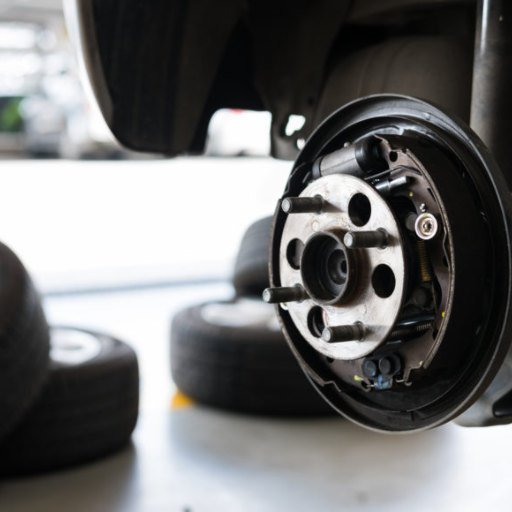
If you are planning to diagnose the bad wheel bearing from home, I suggest commencing the process with a modest noise test. Drive at low speeds with the windows down while listening for any strange sounds, including grinding, rumbling, or humming, that may signify a worn bearing. Next, lift the vehicle up using a car jack and place it firmly on the stands. Grab the tire at the 12 o’clock and 6 o’clock positions and try rocking it back and forth. If it wobbles or shows signs of excessive play, then the bearing may be bad. Spinning the wheel manually may also suffice; roughness or any unusual resistance can indicate a warning sign. Make sure you are careful and ensure your vehicle is stable when carrying out the tests.
Visual inspection: What to look for in your wheel hub
In order to carry out proper visual inspection of your wheel hub, here, in my opinion, is the sequence of the check-up that should be followed so as not to miss anything:
- Condition of the Hub Surface
The hub surface, much like any other component of the overall system, is prone to crack, warp, or become rusted. If the bypassing damage is deemed significant enough, it will alter the quality of the piece, which can result in unsafe driving conditions. Some rust on older hubs is somewhat acceptable, but anything more is cause for concern.
- Seals and Gaskets
Another important aspect to analyze is the gaskets on the rim. Parts such as these are necessary to maintain the structural integrity of the device, ensuring that debris and liquid are not able to enter while helping the grease and lubricant remain in place. If lubrication leaks or the rim has a gap, then the rim will likely need to be replaced to prevent wear and tear.
- Studs and Fasteners
Another important aspect to analyze is the gaskets on the rim. Parts such as these are necessary to maintain the structural integrity of the device, ensuring that debris and liquid are not able to enter while helping the grease and lubricant remain in place. If lubrication leaks or the rim has a gap, then the rim will likely need to be replaced to prevent wear and tear.
- Brake Components Interaction
While inspecting all the hub Sys components, make sure to keep an eye out on how the hub behaves when it’s close to other components, such as the rotor or caliper. Any abnormal movements, such as unusual gaps, misalignments, or imperfections in the rotating, will be indicators of something problematic.
- Visible Grease Buildup
There could be an issue with internal bearing or lubrication containment if grease is present outside the hub. It is recommended that the wheel and hub be cleaned for better understanding in case complaints arise in the future.
- Wheel Hub Alignment
Look over the wheel’s alignment with the rest of the components and tools. If there is an inclination, any form of misalignment or wobbles can be a sign of damage.
These steps are efficient in detecting any signs of wear and tear while at the same time enabling you to feel secure in the safety of your vehicle. If anything appears to be faulty or doesn’t seem to be functioning properly, it is ideal to replace that specific part in order to prevent any further damage from occurring.
Simple tests to detect failing wheel bearings
This is a more complicated area of work for many people, but I prefer to use a couple of simple approaches that are fairly intuitive and straightforward. I also plan to describe automotive wheel bearings and their functionality. The first thing I always start with is the ‘wheel wobble test.’ On the lifted vehicle, I hold the tire in 12 and 6 o’clock positions. It can be staggered if there is any relative movement to the wheel bearing. Secondly, I listen to warning sounds during the car’s driving performance. Normally, when a wheel bearing fails, the car tends to generate a typical growl, which sounds like a hum during turns. Finally, any vibration or irregularities in tire wear patterns indicate the presence of a problem. These tests and exercises help check the condition of the wheel hub bearings and other mechanisms and are done quite quickly. Most importantly, they can help the driver address potential future problems by letting him know the condition of the wheel bearings before they become more serious.
When is it time to replace a wheel bearing?
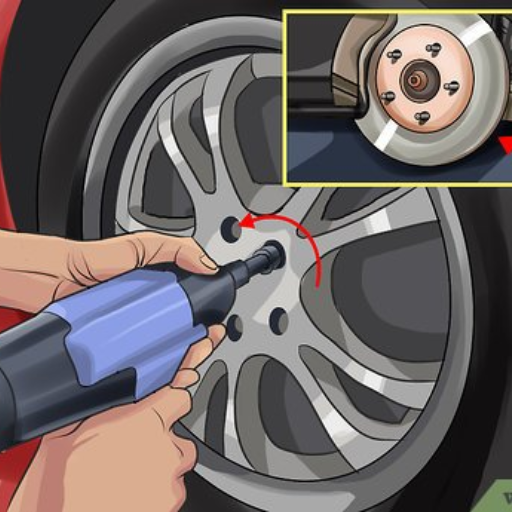
In reconciliation with my experience, once unusual unusual sounds —such as a growling or humming noise —starts manifesting alongside the changing of the wheel bearing, it is best advised to replace it. A wheel bearing should be replaced when the oscillating low mute sound is ignored for long; or when there is excessive tire wear that cannot be attributed to any other cause. Ignoring these symptoms, however, can have dire consequences, such as loss of control of the vehicle or a complete breakdown of the wheel itself. Being able to intervene whilst there is still time alleviates safety concerns and reduces the costs of having to deal with further resolving the issue.
Early warning signs that shouldn’t be ignored
One wheel bearing detail that is quick to sound the alarm of recoil is an unusual increase in the volume of these other roaring sounds, grinding, humming, and rumbling when the vehicle achieves a higher speed or makes sharp turns. In addition, important indicators are a loose or wobbling wheel when physically checked, uneven tire wear, or feeling vibrations in the steering wheel or vehicle floor. Remember that proper maintenance and early detection of these signs can help prevent other damage and ensure the safety of all passengers in the vehicle.
Importance of timely replacement for safety
it is imperative that one does not ignore a failing wheel bearing for any greater length of time. Ignoring it puts your safety at risk while exerting excessive load on the surrounding components, such as the hub, axle, and suspension system. Over the years, I’ve witnessed firsthand how postponing this simple fix is a surefire way to cause catastrophic failures, more often than not requiring expensive repairs or worse, causing an accident. Taking the necessary precautions to guarantee timely replacement is a step forward in protecting the vehicle’s performance, most importantly for you and any other vehicle on the road.
Can a bad wheel bearing cause damage to other parts?
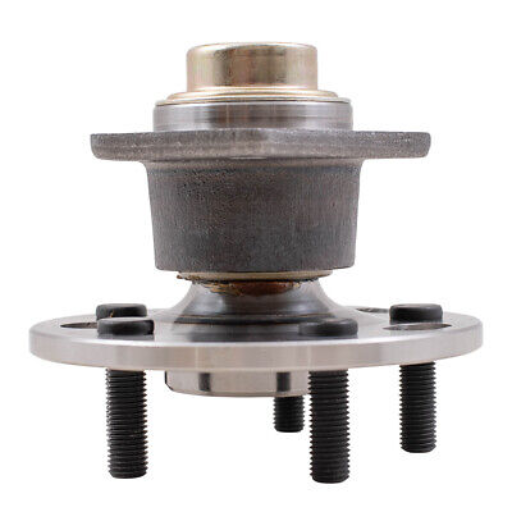
Of course, a failing wheel bearing can destroy other parts of your car if it is not cleared up in good time. In my experience, failures of wheel bearings cause the hub assembly and CV joints, and even the transmission, in extreme cases, to be overloaded. With time, the excessive heat and vibration can cause these parts to wear out earlier than expected, resulting in costly repairs. If, on the other hand, a worn wheel bearing is replaced in good time, the damages will not ensue one after the other. This, in turn, keeps the car operating balance.
Impact on CV joints and axles
Nothing will mess up the inner workings of your car quite as much as a damaged or worn-down wheel bearing, which is why it is important to understand how all of these parts function and fit together. A bad wheel bearing creates internal friction against the CV joints and axles, which in turn leads to all kinds of micro movement that will strengthen the wear on the CV joints, leading to a performance compromise. This constant micro movement and stress from the CV joints and the axles will also wear down the axle shaft and will require a repair or a replacement, which obviously becomes an expensive task. So, it is best to deal with the wheel bearing wear and tear as soon as possible.
Potential damage to wheel hub assemblies
In my experience, a failing wheel bearing poses a serious danger to which the wheel hub assembly is made of. The increased heat and friction caused by a defective bearing tend to warp or otherwise damage the hub itself. As time progresses, this can lead to things such as loose mounting points, decreased structural integrity, and even complete failure of the hub assembly. In order to protect its functionality and prevent bigger repairs later on, the wheel hub assembly is better protected by replacing the wheel bearing upon first showing of wear.
How do symptoms differ between front and rear wheel bearings?
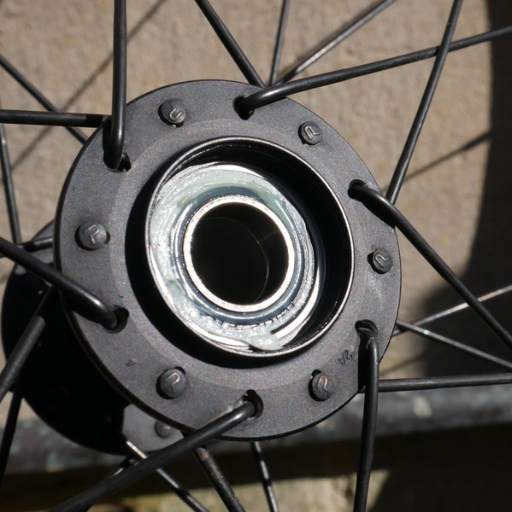
the symptoms of failing front and rear wheel bearings can manifest differently due to their unique roles in the vehicle’s operation. Front-wheel bearing issues are often associated with steering performance. You may notice abnormal vibrations, difficulty in handling, or uneven tire wear alongside the common humming or grinding noise that intensifies during turns. For rear wheel bearings, the symptoms are typically less noticeable at first but may include a steady drone or rumble coming from the rear of the vehicle. Over time, this can escalate to more pronounced noises, especially at higher speeds, and uneven tire wear at the back. Identifying these distinctions early is key to addressing potential issues promptly and maintaining overall vehicle safety.
Distinguishing left or right wheel bearing issues
Rear and front wheel bearings play different roles in a vehicle’s operation which contributes to their symptoms manifesting differently. I will explain how to notice malfunctioning bearings in a vehicle. Front-wheel bearings are largely related to the steering system, which means you may feel a strange vibration, irregular tire wear, grinding or humming sound turning the steering wheel, or a combination of the three, alongside bad turning performance and rough handling of a vehicle. Let’s move on to the rear-wheel bearings, which do not show much indication of a problem to the driver but make a droning or rumbling noise that comes from the back of the vehicle. With time, it progresses to overheating of the wheel and rougher sounds during acceleration. Early identification of all these factors and discerning the noise of the wheel accelerators can help resolve the issues while the vehicle is still drivable and safe.
Unique signs for front vs. rear wheel hub problems
Most problems with front wheel hubs easily get identified as either a steering wheel shake at the violation of a certain degree of speed or as vibrations in the steering wheel itself. One-sided traction and uneven wearing of front tires as well could also be some of the problems related to the front wheel hub. Rear Problems, on the other hand, usually tend to Create a Humming or Grinding Noise, which increases as speed accelerates. While front-hub issues may provoke an operational or steering delay, rear-end issues would mainly compromise on overall stability, traction, and ride comfort. Recognizing these specific signs may help us speed up the diagnosis of the problem and assist in carrying out the required rectification procedures.
Reference
- Arnold Motor Supply: Spotting Wheel Hub Problems
- WJB Group: How to Check Your Wheel Hub Assemblies
- Kelley Blue Book: How Do I Know if I Need a Replacement?
Frequently Asked Questions (FAQs)
Q: What are the most common signs and symptoms of a bad wheel-bearing hub assembly?
A: The most common signs and symptoms of a bad wheel bearing hub assembly include unusual noises (such as grinding, humming, or rumbling), steering wheel vibrations, uneven tire wear, and the ABS light illuminating your dashboard. You may also notice that your vehicle pulls to one side while driving or that the wheel feels loose when jacked up.
Q: How does a wheel bearing noise change as the vehicle accelerates?
A: Wheel bearing noise often becomes more pronounced as the vehicle accelerates. Typically, you’ll hear a humming or growling noise that increases in volume and pitch as you pick up speed. This noise is caused by the damaged hub bearing, which becomes louder as it rotates faster. The noise may change when turning as the weight shifts on the bearing.
Q: Why might the ABS light illuminate due to a bad wheel bearing?
A: The ABS light may illuminate due to a bad wheel bearing because many wheel bearings are equipped with a speed sensor that’s crucial for the ABS system to function properly. When a bearing wears out or becomes loose, it can affect the speed sensor’s ability to accurately read the wheel’s rotation. This malfunction can cause the ABS warning light to illuminate on your dashboard, indicating a problem with the system.
Q: At what vehicle speed do bad wheel-bearing symptoms typically become noticeable?
A: Bad wheel bearing symptoms often become noticeable at speeds between 40-60 mph. However, as the bearing deteriorates, you may start to hear noise or feel vibrations at lower speeds. In severe cases, symptoms can be present even at very low speeds or when the vehicle is nearly stationary.
Q: How can you tell if a wheel bearing is bad when the vehicle is stationary?
A: To check if a wheel bearing is bad when the vehicle is stationary, you can jack up the suspected wheel and try to move it. If the wheel bearing is bad, you might feel loose play when trying to move the wheel slightly from side to side or up and down. Additionally, you may hear a grinding noise when spinning the wheel by hand. However, it’s important to note that not all bad bearings will show these symptoms when stationary, and a professional inspection is recommended for accurate diagnosis.
Q: What causes a wheel bearing to go bad prematurely?
A: A wheel bearing can go bad prematurely due to several factors, including poor road conditions, driving through deep water, improper installation, or using low-quality parts. Impact damage from hitting potholes or curbs can also cause a bearing to fail early. Additionally, lack of lubrication or contamination of the bearing grease can lead to increased wear and premature failure.
Q: Is it safe to drive with a bad wheel bearing, and for how long?
A: It is not safe to drive with a bad wheel bearing for an extended period. While you might be able to drive for a short distance to get to a repair shop, continuing to drive with a damaged hub bearing can lead to serious safety issues. A severely worn bearing can cause the wheel to seize or even separate from the vehicle, potentially causing a dangerous accident. It’s best to address the issue as soon as you notice any symptoms of a bad wheel bearing.
Q: How often should wheel bearings be replaced?
A: Wheel bearings are designed to last for a considerable time, often 100,000 miles or more, under normal driving conditions. However, there’s no set schedule for replacement as their lifespan can vary greatly depending on driving conditions, vehicle type, and bearing quality. It’s best to have your wheel bearings inspected during regular maintenance and replace them when signs of wear are detected rather than adhering to a strict mileage-based replacement schedule.
